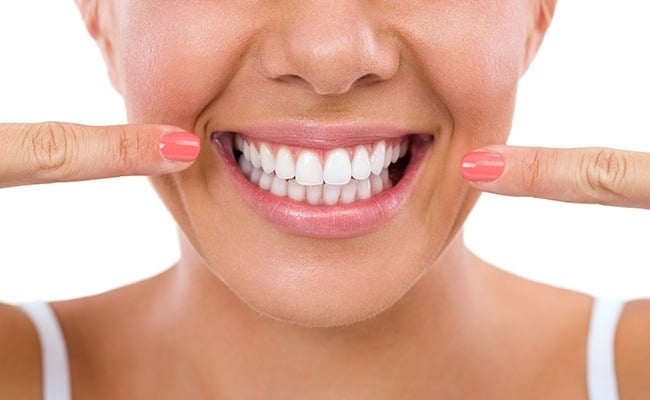Foods and Drinks That Stain Your Teeth

By this point, it’s pretty clear that people want white teeth. As a country, we spend $1.4 billion on consumer teeth whitening products, and the teeth whitening industry generates over $11 billion a year in revenue. We’re not complaining that people are willing to pay to have white teeth, but it does beg the question—what’s staining our teeth in the first place? Foods and drinks cause staining in a couple ways. Foods that are high in acid tend to strip away enamel, which exposes the more vulnerable dentin to staining. Many foods—typically ones with natural bright or rich colors—contain chromogens, substances that adhere to tooth enamel and stain it. Coffee and Tea: Whether you drink coffee or tea to give yourself a quick pick-up, you’re staining your teeth. The acids in these drinks can strip enamel off your teeth—and leave dark stains behind as well. [spacer size=”10″] Wine: Most people think of red wine as a culprit for staining, and it is. It’s acidic and contains stain-causing chromogens. However, most people don’t realize that white wine stains teeth—it’s much more acidic, so it strips tooth enamel and leaves them vulnerable to staining from anything else you’re eating at the time. [spacer size=”10″] Rich Sauces: Sauces that have a rich color—think tomato sauces and curries—combine both acidity and stain-causing pigments that can darken tooth dentin. [spacer size=”10″] Food Coloring: It’s not difficult to imagine why foods high in food coloring stain teeth. After all, they have added chemicals whose sole purpose is to turn the food a bright color! Popsicles and hard candies are big culprits here. [spacer size=”10″] Sugary Drinks: Sports drinks, energy drinks, and soda all contain acids and high amounts of sugar that are damaging to your teeth. They can leave your teeth vulnerable to stains from any food coloring in the drink—and cause cavities as well. [spacer size=”10″] Balsamic Vinegar: All vinegars are acidic, but balsamic vinegar combines the acidity with darker coloring that can stain dentin. [spacer size=”10″] Berries: Cranberries, blueberries, and cherries all contain lots of chromogens and can stain your teeth. In general, if a food (or drink) will leave a stain that is tough to remove from fabric, chances are it will stain your teeth as well. [spacer size=”20″] We’re not recommending that you cut all these foods and drinks out of your diet. It’s just not practical. However, if you want to keep your teeth whiter for longer stretches of time, there are some tips you can use: Avoid sugary drinks and highly processed sugary treats. They tend to cause tooth decay as well as stains. Drink through a straw. If you’re going to have a sugary or acidic drink, using a straw can largely bring the drink past your teeth, reducing the risk of stains. Brush your teeth, rinse your mouth, or even chew sugar-free gum after eating or drinking these trouble foods. It helps remove the stain-causing compounds from your mouth. [spacer size=”20″] You can always use consumer whitening products to reduce stains on your teeth, and in fact, we’ve blogged about them recently! However, if you really want to whiten your teeth as much as possible, we’d love to talk to you and explain the results you can achieve with professional whitening. To learn more about how to reduce the risk of stains or to schedule an appointment, call your Palmdale, CA dentist at 661.202.3542 today!
Toothpastes

Do you ever stand in the oral care section at a grocery store and wonder why there are so many different types of toothpaste available today? Think about how many brands there are—and then how many different types of toothpaste there are for each brand! Crest 3DWhite, Pro-Health, Pro-Health Advanced, with Scope, Sensi, regular old Crest, Kids’ Crest… the list goes on and on. A helpful way to think about your toothpaste choice is to think about your goals, beyond proper oral hygiene, when you brush. Do you want fresh breath or whiter teeth? Do you have tooth sensitivity? Do you want to avoid a long appointment next time you’re at your dental cleaning? When you answer those questions, you’ll start to narrow down that overwhelming selection of toothpaste to a more manageable few. There are a few common types of toothpaste out there today. However, it’s important to realize that many kinds of toothpaste fit into one or more of the categories that suit different needs. Fluoride Toothpaste Fluoride toothpaste contains fluoride compounds to help prevent tooth decay. Fluoride works by strengthening, and even helping repair, tooth enamel. Many public water supplies are treated with small amounts of sodium fluoride. Fluoride treatments at the dentist are also available. Fluoride toothpaste varies in the amount and type of fluoride compounds they contain and can come in a variety of flavors that appeal to both adults and children. Whitening Toothpaste If you’d like your teeth to look a little whiter, whitening toothpaste is a great option. They’re not as effective as dedicated whitening products like whitening strips, but they can help you maintain whitened teeth. However, keep in mind that many whitening kinds of toothpaste can be more abrasive than regular toothpaste and may weaken the enamel of your teeth. If you use them, give your teeth an occasional break by using less abrasive toothpaste as well! Desensitizing Toothpaste Some people experience pain when their teeth are exposed to cold, heat, or touch—even the gentle pressure applied when brushing their teeth. If you experience this condition, called dentin hypersensitivity, you can use desensitizing toothpaste to make brushing a more pleasant (or at least not painful) activity. Anti-plaque Toothpaste Anti-plaque toothpaste help prevent plaque from accumulating around your teeth, reducing the risk of tooth decay and gum disease. There are a variety of anti-plaque compounds out there, including Triclosan (an anti-bacterial compound) and zinc citrate (which supports your immune system). Children’s Toothpaste Toothpaste for kids may or may not have fluoride in them—and that’s actually not a problem. First of all, the physical action of brushing (and flossing) loosens plaque and helps protect your teeth. Typically, toothpaste made for children has fruity flavors and lower levels of fluoride in case of swallowing. To be honest, the most important choice you make is to brush and floss regularly. The best type of toothpaste for you to use is one that supports your oral care needs, and that you will use twice a day, every day. Of course, if you’d like to find out more about toothpaste, or want specific recommendations, we’re happy to help. Call your Palmdale, CA dentist at 661.202.3542 today!
